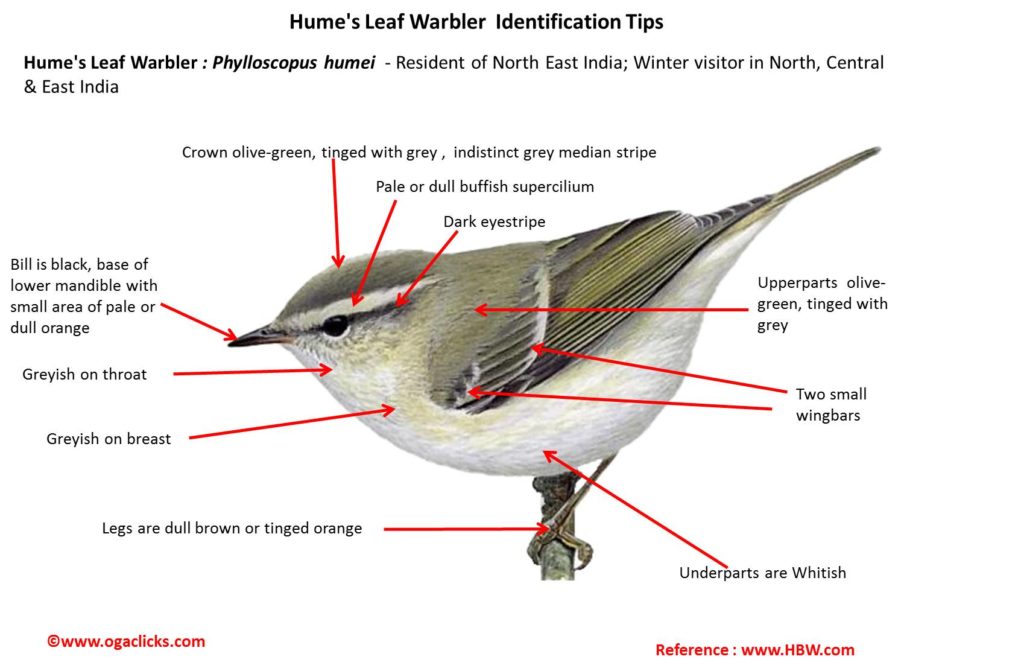Hume’s Leaf Warbler

Hume’s Leaf Warbler Phylloscopus humei
Etymology:
- Phylloscopus : Greek word phullon – leaf; skopos–seeker
- Humei : Named after British ornithologist Allan Octavian Hume (1829–1912)
Vernacular Names :Mar: Humcha Parnavatvatya
Distribution in India: Breedsin Himalayas and winter visitor in Gangetic plains, Odisha, parts of Andhra Pradesh and upper Karnataka.
Description: Size of 9-10cm.It is amedium-sized, slim and active leaf-warbler with thin bill, prominent supercilium and wingbars. Nominate race has pale or dull buffish supercilium, long dark eyestripe; crown and upperparts mostly olive-green, tinged with grey on crown and mantle, crown also with broad and generally indistinct grey median stripe; tips of median and greater upperwing-coverts whitish-buff; flight-feathers dull brown with pale yellowish edges, whitish edges of tertials; whitish below, greyish on throat and breast; iris dark brown; bill mostly black, base of lower mandible sometimes with small area of pale or dull orange; legs dull brown or tinged orange. It differs from all other leaf-warblers with wingbars in small size, lack of yellow on rump and of white in tail, colour of wingbar on greater coverts, relatively narrow eyestripe, and all-dark bill.Both the sexes look similar.
Habitat: It is found during breeding season in larch and pine forests, also subalpine shrubs and rhododendron thickets, up to 2400 m. In non-breeding season moves below 2100m and found in riverine woods and forest, open dry deciduous forest, woodland, orchards, plantations, gardens and roadside verges.
Food Habits: It eats insects, and their eggs and larvae like, beetles, hymenopterans, wasps, sawflies and ants, also moths, dragonflies, flies, bugs , aphids, small cockroaches ,spiders and molluscs. It is usually alone or in pairs, but in non-breeding season frequently in mixed-species flocks. It forages at all levels, and both inside canopy and outside it, taking insects mostly from foliage; frequently hovers to examine outermost foliage; also pursues insects in agile, dashing and twisting flight. It may occasionally feed on the ground.
Breeding Habits: They breed in May-Julyin Finland and Siberia.They are monogamous. Pair formation takes place when female enters male’s song territory, both land on same branch and hop towards each other, with shivering wings half-spread and tail fanned , may raise tail above level of back, male then pursues female in flight. The nest is a ball of plant fibers, moss, grass and animal hair, placed on ground or bank among moss-covered roots or stones or concealed in grassy tussock, usually beneath bush, small tree or low-spreading rhododendron, sometimes in hollow in tree. They lay a clutch of 4-5 eggs. The incubation is done by both sexes, either equally or with female doing more of the work for a period of 11–14 days. The fledging period is 12-14 days. The young are fed by both parents. The young become independent after a further 15 days.